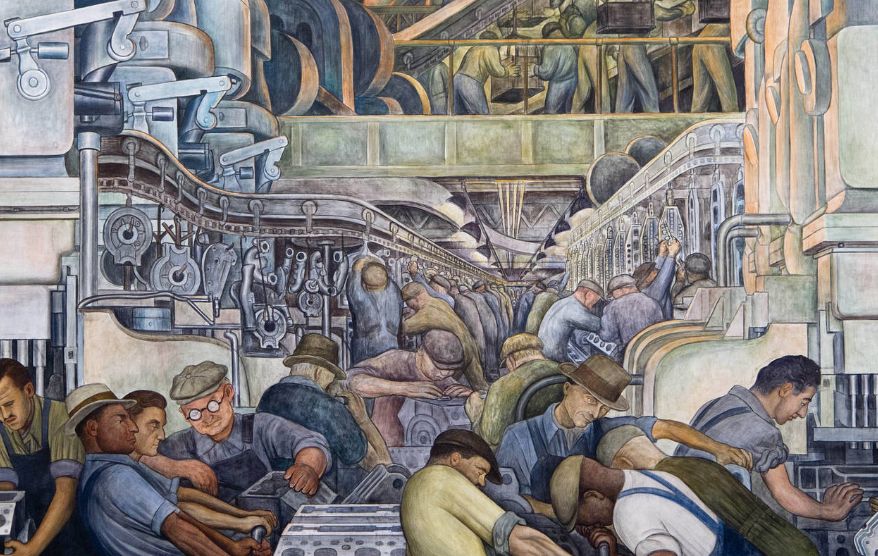Diego Rivera’s mural at the Detroit Institute of Arts (DIA) stands as a monumental testament to the artist’s mastery and the city’s rich cultural heritage. Commissioned in 1932 by Edsel Ford, son of automotive pioneer Henry Ford, the mural titled “Detroit Industry” is a vivid portrayal of the city’s industrial prowess and its labor force. Spanning four walls of the museum’s central courtyard, Rivera’s mural is an immersive experience that captures the essence of Detroit’s industrial might during the early 20th century.
The mural’s composition is a remarkable blend of realism and symbolism, showcasing Rivera’s distinctive style. The artist meticulously depicted various aspects of Detroit’s industrial landscape, from the assembly lines of automobile factories to the workers laboring in them. Through his meticulous attention to detail, Rivera not only celebrates the technological advancements of the era but also pays homage to the men and women whose labor fueled the city’s growth.
One of the most striking features of the mural is its vibrant color palette, which adds to the dynamism and energy of the depicted scenes. Rivera utilized bold hues and intricate patterns to create a sense of movement and vitality, drawing viewers into the bustling world of Detroit’s factories. The larger-than-life figures of workers and machinery dominate the composition, underscoring the monumental scale of industrial production and its impact on society.
Beyond its visual appeal, Rivera’s mural is also imbued with layers of social and political commentary. Throughout the artwork, the artist incorporates symbols and imagery that reflect his Marxist ideology and his belief in the power of the working class. By depicting workers of diverse backgrounds and ethnicities, Rivera emphasizes the universality of labor and the solidarity among workers, regardless of their differences.
Decades after its completion, Rivera’s mural continues to captivate audiences and spark dialogue about art, industry, and society. It remains a defining feature of the Detroit Institute of Arts, drawing visitors from around the world to marvel at its grandeur and significance. As a testament to Rivera’s artistic genius and Detroit’s industrial legacy, the mural serves as a timeless reminder of the city’s resilience and cultural richness.


